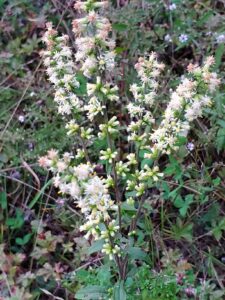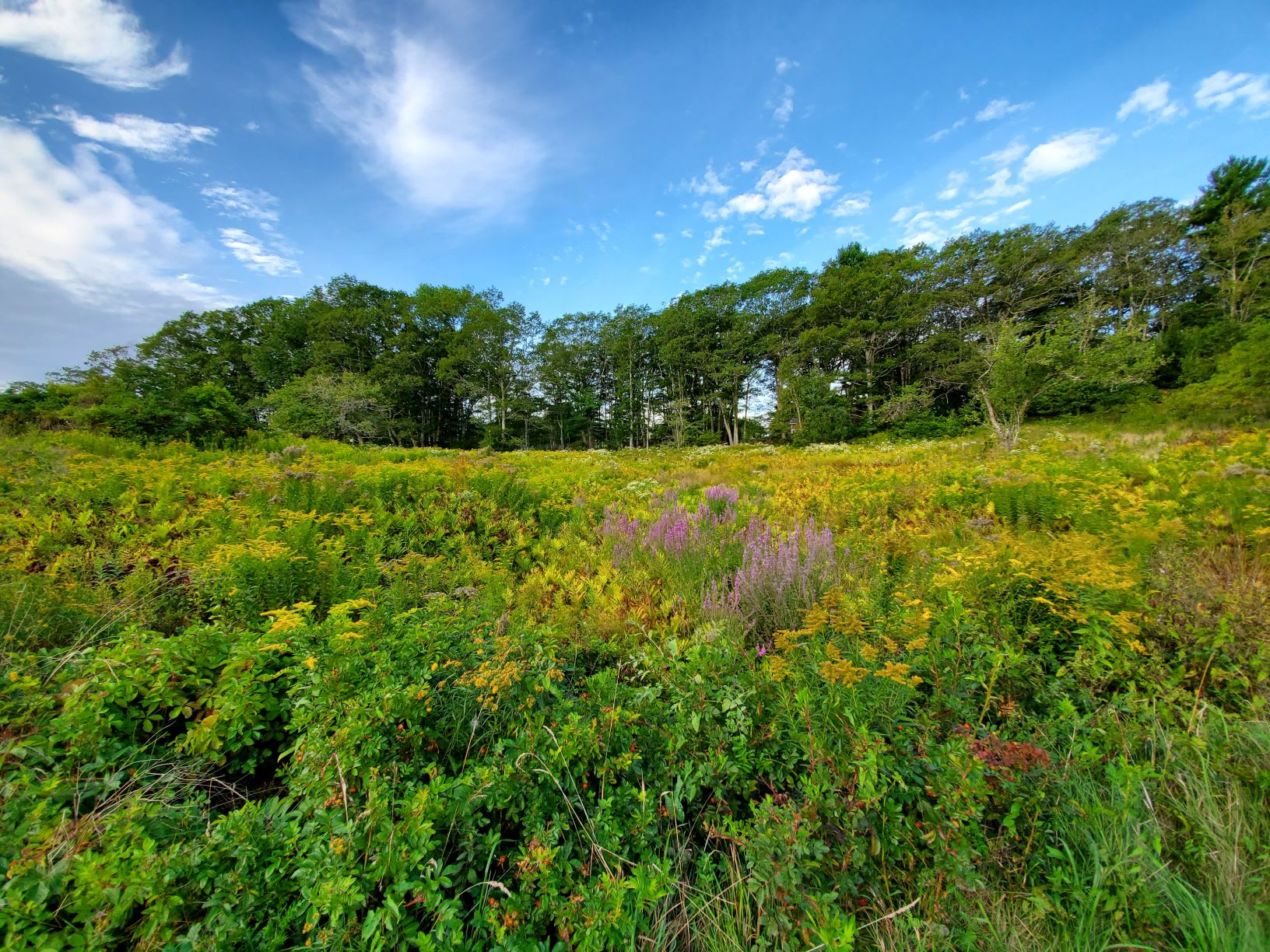September 16: Goldenrods Galore

Fields full of goldenrod at BRLT’s Oak Point Farm
Each summer, I hear people bemoan the arrival of the goldenrod flower as a harbinger of fall. Sometimes it shows up in late July, but it is most definitely blooming in August and continues to bloom throughout the fall, until it is taken out by heavy frosts. A familiar sight to most, goldenrod is common along roadsides and in fields, the name a nod to the bright yellow coloration of the flowers. But did you know that Maine has 19 different species of goldenrod? Each of these species of native goldenrod varies in size, form, and leaf shape, which is helpful when attempting to identify them, although they can hybridize and make ID tricky.
On a recent walk through the fields of Oak Point Farm I noticed a few species of goldenrod in bloom, including Canada goldenrod, rough stemmed goldenrod, lance leaved goldenrod, seaside goldenrod, and silverrod. The last two goldenrods are easier to recognize if you are interested in learning to identify some of the different species. Seaside goldenrod grows with fleshy leaves along the edges of the ocean, tolerant of salt and flooding. Silverrod is also known as white goldenrod, as it is the only goldenrod with white flowers.

Silverrod, also known as white goldenrod
Goldenrod is often blamed inaccurately for seasonal allergies, as its flowers are present when the true culprit, ragweed is in bloom. Ragweed is an often overlooked plant with green flowers that is pollinated by the wind, hence peoples allergic reaction to it. Goldenrod on the other hand is pollinated by insects such as bumblebees, butterflies, wasps, and beetles, who are attracted to the sticky pollen grains. For gardeners interested in encouraging pollinator populations in their gardens, goldenrods are the perfect addition.

Seaside goldenrod
Goldenrods are in the genus Solidago, which comes from the Latin word solidus, meaning “whole”, a reflection of the healing properties of the plant. The plant has been used throughout time to cure a variety of ailments from inflammation, arthritis, skin conditions, sore throats, toothaches, and kidney stones, just to name a few. Goldenrod is also edible, with young leaves being cooked like spinach or added to soup. The flowers make a beautiful garnish for salads and the along with the leaves can be used to make an excellent tea, something the colonists discovered as they looked for substitutes.
Perhaps my favorite story about the goldenrod plant involves Thomas Edison and Henry Ford. Edison discovered that the plant could be used to make a natural rubber, so he experimented with the cultivation process in hopes that he could create a much needed rubber substitute during World War II. While the goldenrod rubber was quite tacky and not as elastic as true rubber, that didn’t prevent his friend Ford from giving him a Model T, which was mounted with goldenrod tires. Edison was able to drive the car for several years before the goldenrod rubber wore out. Think of that next time you have to get a new set of tires.




